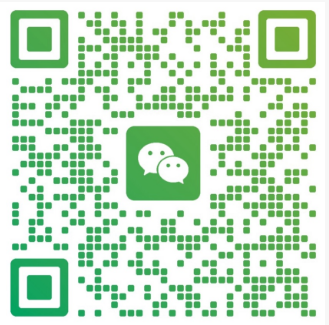Do You Provide Custom Product Sourcing Services?
China Sourcing Expert Allen Zeng
10/10/20255 min read


Finding the right factory for a custom product in China can be exciting — but also risky. I’ve seen many importers waste months and money because they worked with the wrong supplier or misunderstood the production process.
Yes, I provide custom product sourcing services. As a professional China sourcing agent, I help clients turn ideas into real products. My team and I manage everything from supplier search to sample development, factory audits, production tracking, quality control, and final shipment.
If you’re exploring custom manufacturing in China, let’s walk through how this process works — and what you should expect at each step.
How do you ensure that custom products meet my specifications?
When you’re investing in a new product, small mistakes in specifications can lead to big losses. I know this firsthand — one small detail in a material or dimension can make a whole batch useless.
I ensure custom products meet your specifications by managing the process from design to delivery — including supplier selection, sample approval, on-site quality inspections, and detailed reporting. Every production stage is verified to make sure your product looks, feels, and functions exactly as you expect.
To dive deeper, here’s how this works in real projects:
Step 1: Collecting Requirements
We start with a clear product brief — materials, colors, dimensions, functions, packaging, and budget. The more details you provide, the better I can translate your ideas into factory language. This is where my experience as a China sourcing agent truly matters: I understand how to turn your expectations into manufacturing terms.
Step 2: Supplier Matching
Then I search for the best-fit factories, often using verified China supplier sourcing databases, trade fairs, and my private network. Not every factory can handle custom projects — I only shortlist those with proven R&D or OEM/ODM capabilities.
Step 3: Sample Production and Approval
Before mass production, we request samples. I review them on-site and provide photos, videos, and inspection reports. Only when you confirm the sample will the factory start mass production. This stage eliminates 90% of potential issues later.
Step 4: Quality Control During and After Production
We perform in-process and pre-shipment inspections to confirm consistency with the approved sample. This prevents surprises when your goods arrive. For complex products, we can add functional testing or packaging verification.
Step 5: Feedback and Continuous Improvement
After each order, I evaluate factory performance — quality, communication, and delivery time — to improve future cooperation.
That’s how I ensure every detail of your custom product matches your specifications, even when you’re thousands of miles away.
Can you help me find niche suppliers for customized products?
Yes, absolutely — that’s one of my strongest areas as a China sourcing specialist. Many of my clients come to me after struggling to find factories that can produce small-batch or niche products.
I help clients find niche suppliers in China through deep industry research, factory verification, and direct communication with qualified manufacturers — not just trading companies. Whether it’s eco-friendly materials, low-volume production, or specialized components, I know where to look.
Understanding “Niche” in the China Market
“Niche” can mean different things. It could be:
A new product idea with no existing suppliers.
A small-quantity order that big factories refuse.
A specialized product using rare materials or technologies.
In each case, the challenge is finding a supplier who is both capable and willing. Many China factories prioritize large orders, so I rely on relationships with smaller but flexible manufacturers who value long-term cooperation.
How I Identify the Right Factory
Targeted Sourcing: I use both online platforms and offline networks to shortlist suppliers. But I don’t rely on Alibaba alone — I check local manufacturer databases, WeChat business groups, and factory clusters in cities like Shenzhen, Ningbo, and Yiwu.
Factory Verification: Before recommending any supplier, I verify their business license, export history, and real production capabilities. This prevents the common issue of “trading companies pretending to be factories.”
Communication and Technical Assessment: I discuss your product directly with their engineers to ensure they understand your specifications and can meet your quality standards.
Pilot Orders and Feedback: For niche suppliers, we often start with small test orders to evaluate performance before scaling up.
Finding niche suppliers is not just about searching online — it’s about knowing how to separate real manufacturers from middlemen, and that’s exactly where a China sourcing company like mine adds value.
What are the challenges in sourcing custom products from China?
If you’ve ever developed a new product in China, you know the journey is rarely smooth. Miscommunication, inconsistent samples, and production delays are all common pitfalls.
The biggest challenges in custom product sourcing include unclear specifications, communication barriers, inconsistent quality, intellectual property risks, and hidden costs during production. Knowing how to manage these risks is key to a successful project.
1. Communication Gaps
Even experienced importers struggle when technical terms get “lost in translation.” Chinese factories may say “yes” to everything, but that doesn’t mean they fully understand. That’s why I act as your local bridge — translating your product brief into clear factory instructions and double-checking every detail.
2. Quality Inconsistency
Factories often focus on cost reduction. Without regular follow-up, quality can easily drop in later batches. That’s why quality control in China sourcing is a must, not an option. I personally visit or arrange independent inspectors to verify every production stage.
3. Minimum Order Quantity (MOQ)
Custom products usually require molds, tooling, or setup costs. This often raises the MOQ. A good China procurement agent can negotiate with factories to reduce MOQs or combine orders to balance costs.
4. Lead Time and Delays
Chinese New Year, power restrictions, or raw material shortages can delay production. I track schedules closely and plan buffer times to avoid surprises.
5. Intellectual Property (IP) Risks
When you share designs with multiple suppliers, there’s always a small chance of copying. I minimize this risk by signing NDAs and working only with verified, professional factories. (More on this in the next section.)
In short, the challenges of sourcing from China are manageable — if you have someone who knows the local landscape and can act as your eyes and ears on the ground.
How do you handle intellectual property protection for custom designs?
Protecting your design is one of the most important — and often overlooked — parts of custom manufacturing. I’ve seen businesses lose their advantage because they didn’t secure their intellectual property early enough.
I protect your intellectual property by signing NDAs with factories, limiting design access, and only working with verified suppliers with a good reputation for IP compliance. My goal is to keep your product unique and safe.
How I Manage IP at Each Stage
1. Before Contacting Factories
Before I share your product details, I identify potential risks. For innovative designs, I recommend registering trademarks or design patents in your home country and in China. This gives legal protection if copying happens later.
2. NDA and Confidentiality Agreements
Every supplier I contact for custom projects must sign a Non-Disclosure Agreement (NDA). This ensures they legally cannot share or reproduce your designs without permission.
3. Controlled Information Sharing
I never send full design files to multiple suppliers at once. I usually split information — only providing what’s necessary for quotes or feasibility analysis. Full technical drawings are shared only with the final selected manufacturer.
4. Working with Reliable Partners
My long-term relationships with trusted China factories reduce IP risks significantly. Reputable factories focus on long-term partnerships, not quick profits from copying.
5. Production Monitoring and After-Sales Follow-up
Even after shipment, I keep monitoring the market for similar products to detect possible leaks. If issues arise, I help clients take the proper steps through local authorities or legal partners.
Protecting intellectual property is not just about paperwork — it’s about strategy, discipline, and working with someone who understands how the local market operates.
Custom product sourcing from China is complex — but with the right China sourcing agent, it becomes a clear, structured process that saves you time, cost, and risk.
Connect Us
Great partnerships start with a simple hello.
Quick chat
Explore
© 2025. All rights reserved.












